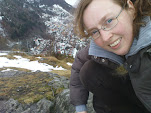Things have moved fast the last weeks. Lykkejegerne has really taken off and we have had enthusiastic discussions about concept and about organisation of the project. I have also been very aware of taking my supervisor's, and other people's, advice of making the project focused enough. It is so easy to get pulled away into the energy and excitement of the work, so many things that would be fun to do! But I started to feel the same rapid heartbeat as I felt when working on Havlandet (both good and bad; exciting to work with but also stressful to balance). So we narrowed it down to one exhibition idea; "How are you connected to the world?". The idea based on the model I sketched for mapping out different foods. This would be an installation were visitors could register their family's touches with the world outside of Norway (e.g. myself: Grandma Icelandic, uncle living in Argentina, the Hilt family shipwrecking outside Bergen on their way from Germany to America, great grandpa working as a doctor for the Indians in the wild west, father born in Brooklyn, etc.) . After registering they could enter the installation and see these connections visualized around them.
But, as the professional reader will see, it is still a huge project. In addition to the immediate technical problems, there are also questions like: What audiovisuals do we show from each country? How do we deal with politically charged areas?
So we narrowed it down even further, saying that what we want to talk about is how a culture that is alive (and we want our culture to be living) will allways be open and constantly changing. It is open to new impulses and molds new and old into something unique for that place and time. We want to show this by looking at traditional food in Norway.
Risengrynsgrøt, pepperkaker, raspeballer are some examples of food we regard as truly Norwegian. But how long have they been traditional? When did they become Norwegian? They all have ingredients like rice, sugar, potatoes, black pepper and cinnamon, foods that at some stage was imported by travelling humans. (And through this we also touch the debate of who is a Norwegian. What is a second generation immigrant? Third? Fourth? Nice comment by Jill Walker Rettberg here.)
Interestingly narrowing the project down thematically, opened it up for exploring exhibition ideas and design solutions. It seems by being focused thematically we have managed to get the project to focus more on the design of the exhibit.
Tuesday, 4 September 2007
Fiskeboller med karri
Subscribe to:
Post Comments (Atom)




No comments:
Post a Comment